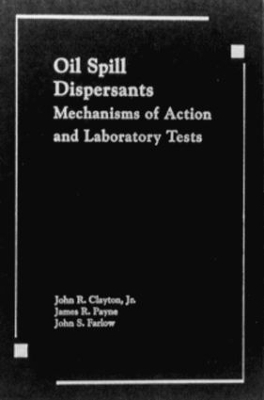
Oil Spill Dispersants
Crc Press Inc (Verlag)
978-0-87371-946-9 (ISBN)
Oil Spill Dispersants: Mechanisms of Action and Laboratory Tests provides a comprehensive summary of current information available regarding the general formulation of commercial dispersants and their function to lower oil-water interfacial tension. The book considers how chemical dispersants work for oil spills, the properties and chemistry of oils (including weathering state), the variables that affect dispersant performance, and the relationships between laboratory methods and field situations.
The book also considers the strengths and limitations of specific laboratory tests, including brief discussions of the applicability of results for estimating dispersant performance in field trials or conditions encountered during real spill events. Laboratory tests are separated into four groups: tank tests, shake/flask tests, interfacial surface tension tests, and flume tests. Rapid-screen field tests are considered as a separate group. Recommendations for improvements in future laboratory testing are offered as well. Oil Spill Dispersants will be useful for regulators evaluating dispersant agents, field personnel involved with using dispersants, laboratory scientists studying performance and behavior of oil and dispersants, and managers responsible for designing studies related to the treatment of oil slicks with dispersants.
Clayton/Payne/,
Section 1: Introduction Section 2: General Mechanism of Action of Chemical Dispersants 1. Chemical Formulation of Dispersant Agents Section 3: Fators Affecting Chemical Dispersion of oil and ITS 2. Measurement 3. Properties and Chemistry of Oil 4. Dispersant Composition 5. Dispersant Application 6. Mixing Energy 7. Dispersant-to-Oil Ratio (DOR) 8. Oil-to-Water Ratio (OWR) 9. Temperature 10. Salinity Sampling and Analysis Method 11. Section 4: Laboratory Testing of Dispersant Performance 12. Laboratory Testing Methods 13. Advantages and Disadvantages of Different Laboratory Tests Rapid Field Tests for Estimating Dispersant Performance Section 5: Field Tests of Dispersant Applications Section 6: Summary and Recommendations - Laboratory Studies
| Erscheint lt. Verlag | 10.2.1993 |
|---|---|
| Verlagsort | Bosa Roca |
| Sprache | englisch |
| Maße | 178 x 254 mm |
| Gewicht | 476 g |
| Einbandart | gebunden |
| Themenwelt | Naturwissenschaften ► Biologie ► Ökologie / Naturschutz |
| Technik ► Elektrotechnik / Energietechnik | |
| Technik ► Umwelttechnik / Biotechnologie | |
| ISBN-10 | 0-87371-946-8 / 0873719468 |
| ISBN-13 | 978-0-87371-946-9 / 9780873719469 |
| Zustand | Neuware |
| Haben Sie eine Frage zum Produkt? |
aus dem Bereich


